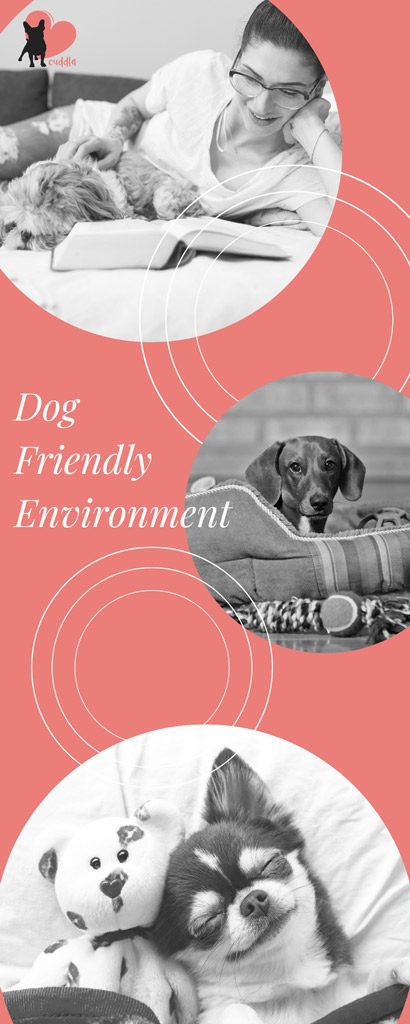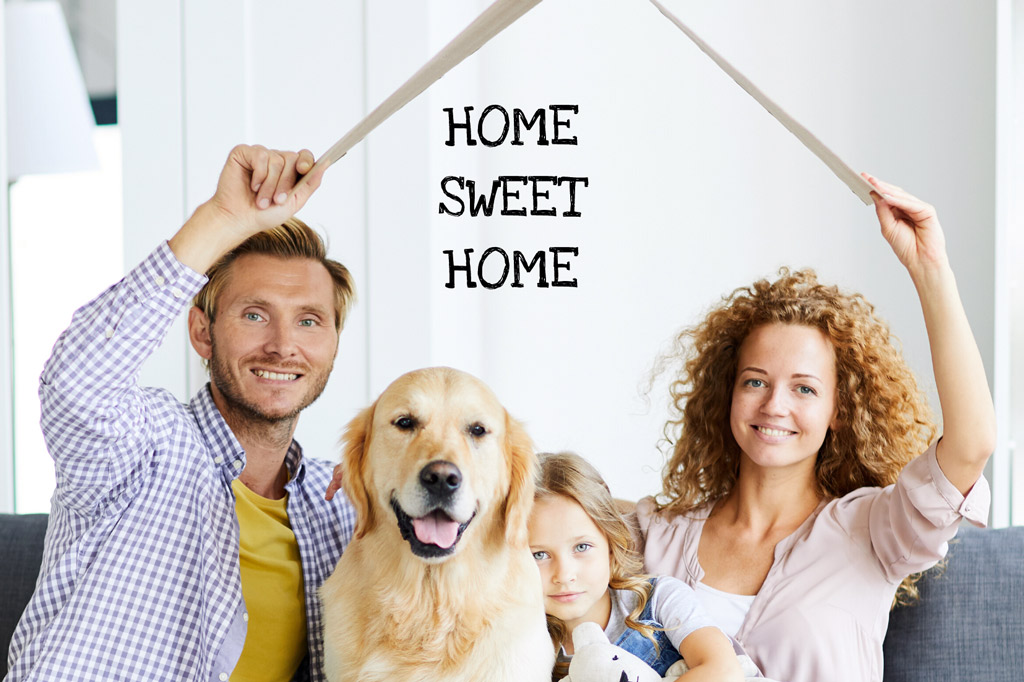
Before bringing your puppy or doggy home, there are a few things to prepare, which I talk about in the First-Time Dog Owners post.
In this blog post, I decided to do a deep dive into the impact of your home and environment on your pup’s life.
Creating a suitable environment for your dog is one of the five pillars in dog care and welfare.
There’s no need for major changes. I am not talking about remodelling your home!
However, making some adjustments and taking safety into account will make a huge difference in your dog’s life.
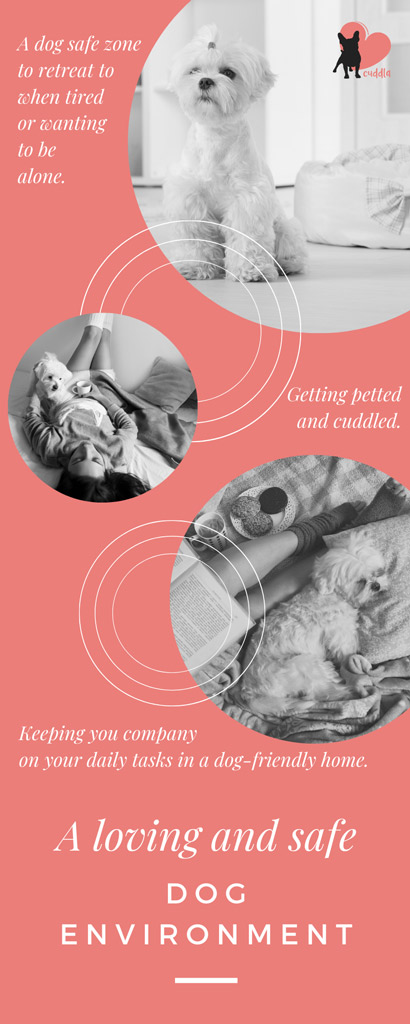
Dog Environment Needs
Following the code of practice from the welfare of dogs (source), your dog’s needs a suitable environment and companion, among other basic needs:
- A balanced diet.
- Daily exercise.
- Regular training.
- And health care.
Dogs have the right to a safe environment, protected against hazards and dangers. This is when dog-proofing your house comes in handy.
Also, your new puppy needs a safe and comfortable place to rest at home. If you have multiple dogs, each one will need a dog safe zone.
Dogs are social creatures that need human companionship, not necessarily other dogs. They have been bred to be human’s best friends, so ultimately they only need your company to be happy.
Continue reading to discover how to create a dog-friendly home. 🙂
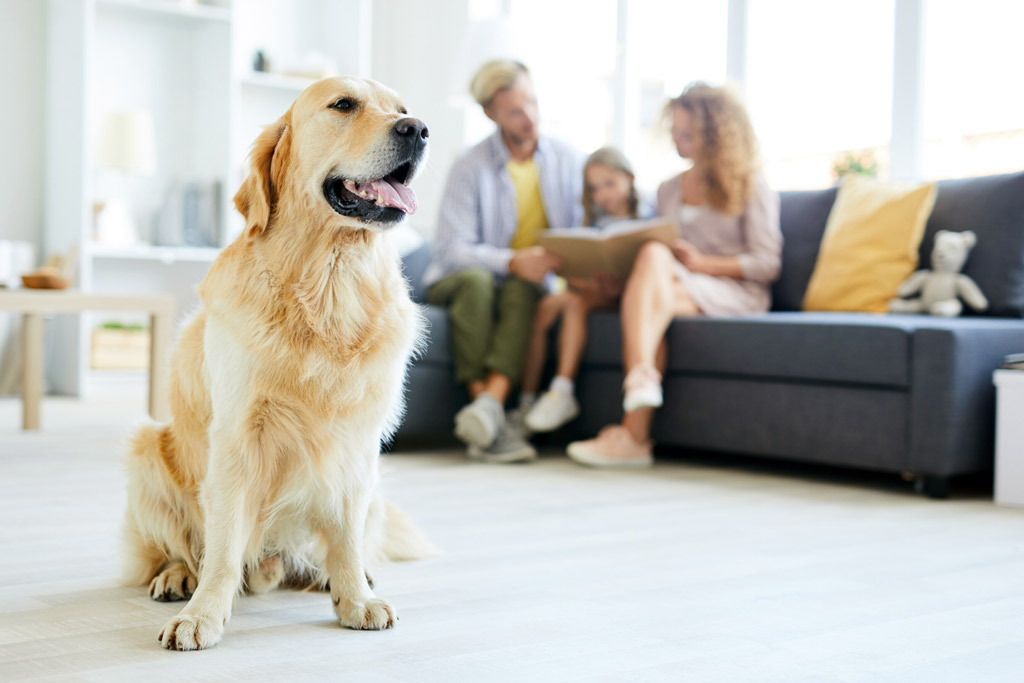
A Suitable Home for Your Dog
Before your new pooch arrives at your home, one of the first things to do is go through your house and identify any possible hazards. Then with that, you can start considering where your doggy is going to be spending most of the time.
Creating a Dog-Friendly Home
Dogs are naturally inquisitive and may put themselves in danger if they are left to explore, especially if the home is not dog-safe.
Safety is paramount in a dog-friendly home. Apart from removing possible hazards, like cables, you also want to create a toxin-free environment.
Let’s see how to do that!
Dog-Proof Your House
The easiest way to dog-proof your home is to go through this room-by-room checklist:
- Kitchen:
- Use childproof latches to keep cabinets closed.
- Place medications and cleaning products out of reach.
- Keep trash cans closed or inside a latched cabinet.
- Keep foods out of reach.
Depending on your home plan, you might want to keep the door closed or install a dog gate to keep the kitchen inaccessible at times.
- Bathrooms:
- Keep laundry basket and cabinets closed.
- Place cleaning products out of reach.
- Maintain a closed bin policy
- Keep the toilet lid closed to prevent drowning or drinking of harmful cleaning chemicals.
Keep the bathroom doors closed at all times, especially when you’re not in there, to limit your dog’s access since there’s no need for your pooch to be in there alone.
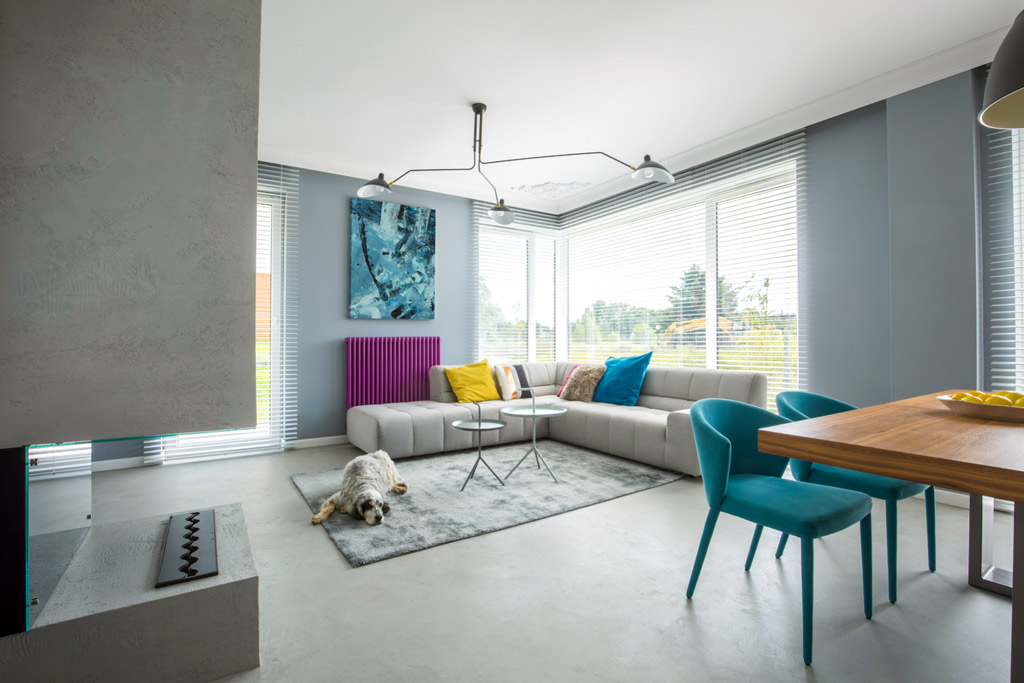
- Living room:
- Place dangling wires from lamps, VCRs, televisions, stereos, and telephones out of reach. Hide them behind furniture.
- Move any poisonous house plants out of reach. Careful with hanging plants, dogs are resourceful and can jump onto them from a nearby surface.
- Make sure all heating and air vents have covers.
- Put away anything that could be dangerous or breakable.
- Be careful with your curtains, as they attract pet hair, dander, and odours. Wood blinds or vertical blinds are a great alternative.
Since this is the main room of the house, as a rule of thumb always tidy up toys after playing. This rule applies to both your dog and your kids. This is the simplest solution to avoid confusion and to avoid hazards.
Our Dog Home Alone Safety blog post can help with that – head over there to find out more!
- Bedrooms:
- Keep clothes and shoes behind closed doors.
- Place lotions and cosmetics off accessible surfaces like the nightstand.
- Move electrical and phone wires out of reach of chewing.
Unless your dog sleeps in your room, bedrooms can be another off-limits space for your pooch.
- Hallway:
- Avoid open stairways, decks or balconies, which can result in falls. You can put gates on the stairs.
- Keep doors closed, especially if they can allow your dog to escape outside.
- Hide all the cables.
If you’re planning to install a dog door, the hall entry is a great place to put it to restrict your dog from the rest of the house, especially if you have multiple floors.
Finally, get familiar with toxic products for your pooch that you find at home.
- Toxic products for dogs:
- Some plants.
- A selection of human foods.
- Medications.
- Household cleaning products.
- Air fresheners.
- Candles.
- Plant fertilizers.
- Antifreeze.
- Etc.
P.S. You can find the complete list of toxic products and also dog-friendly materials in our How to Make Your Home Dog-Friendly and Safe blog post.
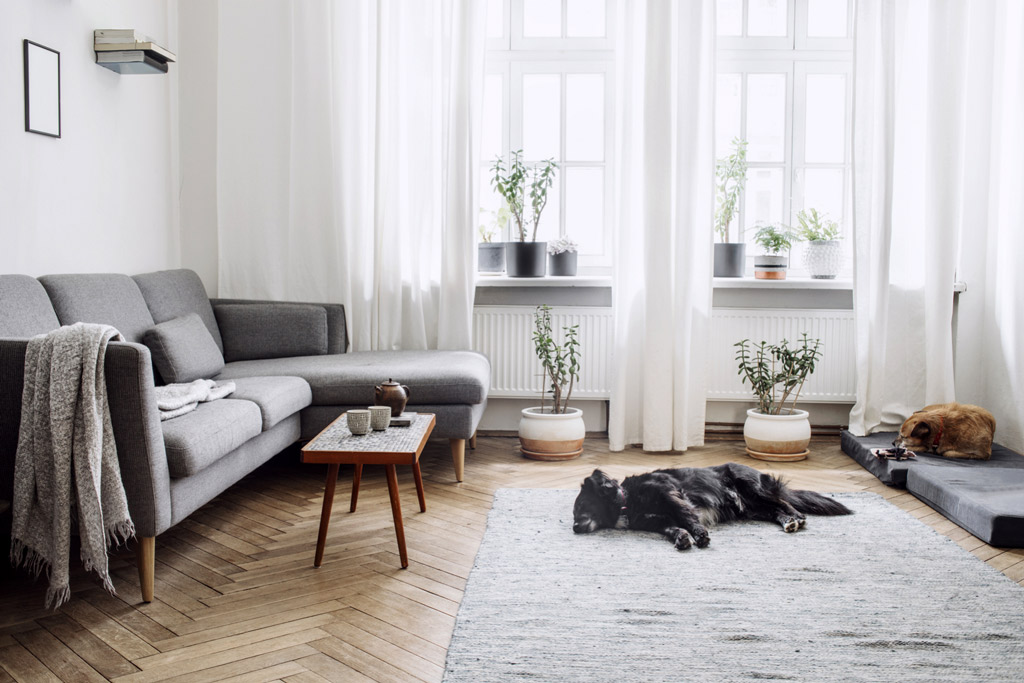
Dog-Proof Your Garden
Here are some things to consider and check off your list:
- Garden:
- Make sure that plants in your garden are safe for dogs.
- Have a fence that is at least 24-inches tall.
- Check the fence for any holes or spaces where your dog might be able to squeeze through and patch them up.
- Keep your swimming pool or pond fenced or covered.
- Have a secure lock on your garden gate so your pooch cannot freely or easily open.
- Keep gardening tools and products hidden and out of reach.
- Ensure that garbage bins are closed and if possible, keep them behind closed doors.
- Garage and shed:
- Move all chemicals to high shelves or behind securely closed doors.
- Clean all antifreeze from the floor and driveway.
- Keep all sharp objects and tools out of reach.
P.S. I cover some handy, practical tips for dog-proofing your garden and keeping your plants safe from your pooch in How to Make Your Garden Dog-Friendly And Safe.
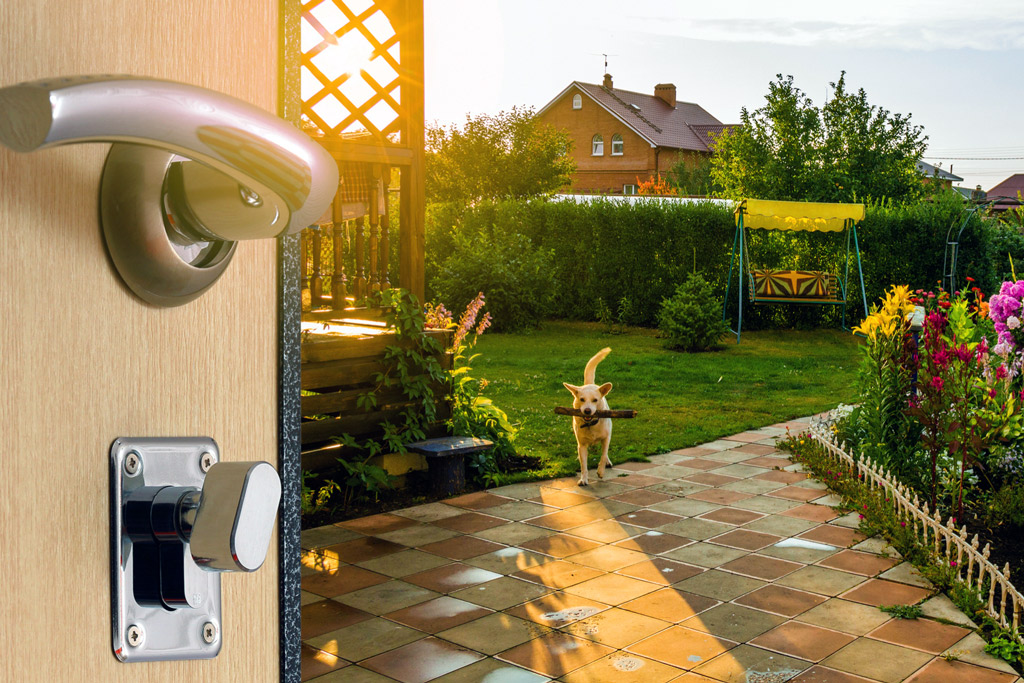
Dog Safe Zone
Once your home is safe and dog-friendly, there’s one last thing you can do to make it comfortable for your dog.
A dog safe zone isn’t hard to create, but it does require some thought.
First of all, decide where you have room to create a permanent area just for your dog. It should be a place that your pooch has free access to since the goal is that he sees it as the BEST PLACE ever!
Think of it as an extended space of your dog’s sleeping area. That’s why you should choose a quieter area of your house. Your furry friend will go to his dog-safe zone when he needs to rest or if he’s feeling nervous.
Next step is to make it comfortable. So, what does your pooch need?
- A bed: Dogs spend more than half of the day sleeping, so your pooch needs a comfortable bed!
- A blanket: Ideal for burrowing and extra warmth.
- A crate: If you want to crate train as part of house-training your puppy.
- A playpen: They come in handy when you live in a small apartment or/and open-plan space.
- A dog-gate: Very useful to limit your dog’s access to the rest of the house and to keep him in a restricted area when alone.
- Toys: Interactive toys help with your dog’s mental stimulation and some plush toys provide emotional comfort.
- A feeding bowl: Establish a feeding area in your dog’s safe space where you can place your dog’s bowls for food and water.
- A water bowl: Keep water accessible at all times and change your dog’s water daily to keep it fresh and clean.
For ideas on what you can get, my Dog Safe Zone Kit list on Amazon shows you a list of dog beds and other basic necessities you should have for your pooch.
The last step is to introduce your puppy to his space and gradually teach him that it is okay to stay there by himself.
If you have a garden, consider the outdoors as an extension of your dog’s safe zone. You might want to facilitate the access through a dog flap and install a permanent outdoors dog house (Amazon link) there too. However, don’t let your dog sleep outside at night, even if it’s in a house dog.
Finally, if you have two or more dogs, create a space for each dog. Some might enjoy sleeping together. However, it’s good that they can have a space to call their own and retire there when they want to.
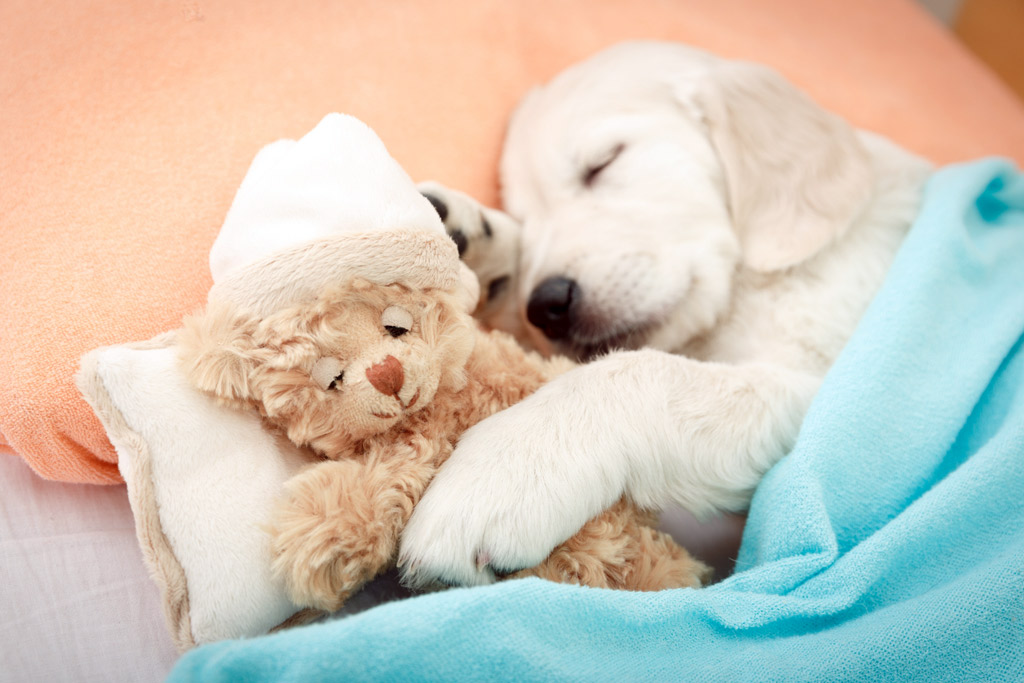
Dog Companionship
Dogs, like us, are social creatures and need company. Not only that, they enjoy and value human companions.
As a consequence, there’s no dog that enjoys being left alone. Some are able to handle the alone time better than others, but that doesn’t mean that they like it. Sadly, many dogs develop separation anxiety due to the long hours they spend alone or because they haven’t been gradually taught that staying alone for a while is okay.
Apart from your pooch feeling lonely when home alone, prolonged periods of alone time can cause behavioural problems that are going to be distressing for both of you.
That’s why it’s important to keep a balance. Provide your dog with entertainment when you leave your pooch alone and consider professional dog care to make sure your pooch isn’t left alone for an excessive amount of time.
Use my favourite dog care options while you are at work or on holidays for exploring your options.
When you are away, make sure that a responsible person is taking care of your pooch. When someone else is taking care of your furry friend, that person also has a legal responsibility to ensure your dog’s welfare.
This means that the carer understands dogs’ needs and knows how to provide for them. Since you are still legally responsible for your dogs even when they are not with you, ensure you leave your dog with a responsible carer.
When thinking of dog companionship, many dog parents think that they need to get another dog, so that they can keep each other company. However, you are your dog’s ultimate companion. Your dog only needs your attention and to spend quality time together. Dog parents who are able to provide for their doggies needs become their dogs’ heroes and gain their devotion.
However, that doesn’t mean that your pooch shouldn’t have contact with the outside world! Quite the opposite.
Socialization helps to expose your dog to different people, pets, sounds and situations. This helps your pooch to be more resilient when facing new and uncomfortable situations.
Puppies that are deprived of opportunities to develop social behaviours can become withdrawn, anxious and even aggressive when they become adults. This is likely to happen when pups are removed from their mother or littermates too early (also if they are not introduced carefully to their environment).
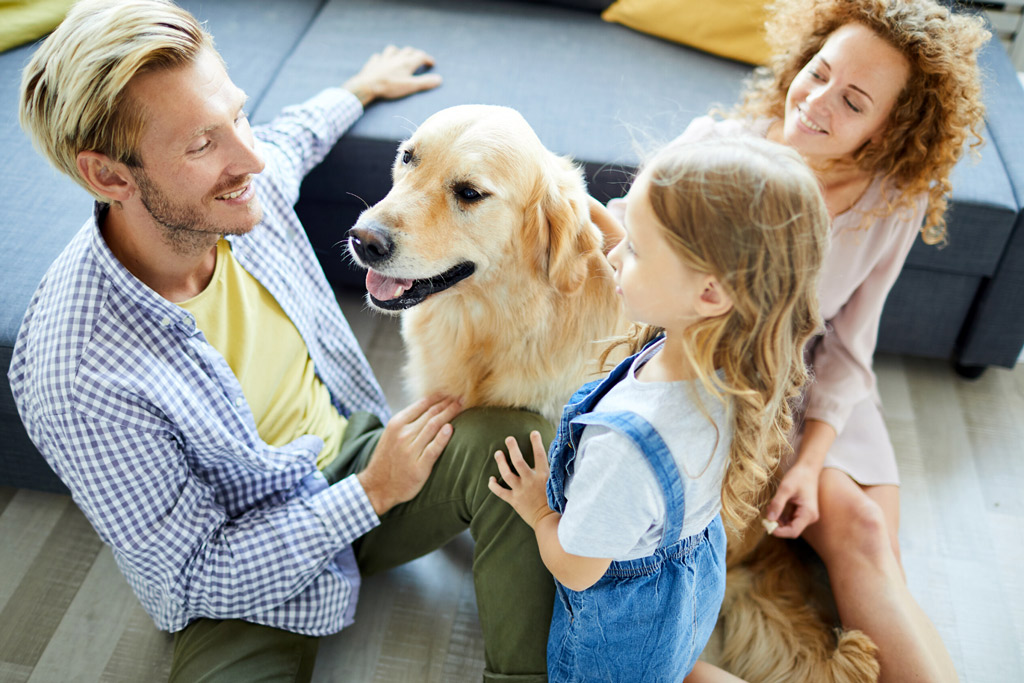
Final Thoughts
Ideally, you should make as many adjustments as you can and like, but as long as you cover your dog’s needs for a suitable and safe environment, you have achieved the goal!
Crafting a suitable dog environment will have a positive impact on your dog’s life and the bond you share. Your pooch will see you as the source of all things good, which increases your pup’s trust towards you.
Welcome your new pooch to your loving home!
Continue on to our Dog Care: The 5 Pillars to a Happy and Healthy Pooch blog post to complete the other 4 dog care and welfare pillars.
